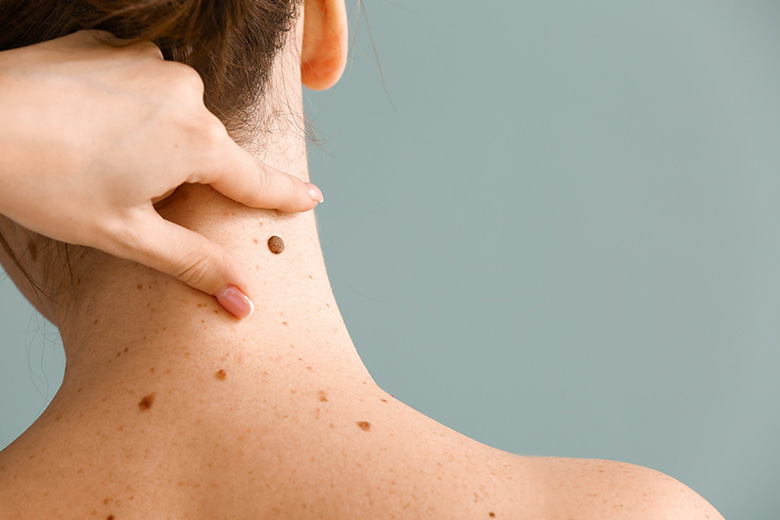Professional SKIN LUMPS & BUMPS Treatment in Chelsea and Battersea
Are you dealing with skin lumps or bumps that concern you? Our expert clinic in Chelsea and Battersea offers safe, effective treatments to diagnose and manage all types of skin growths. Restore your skin’s health and appearance with care tailored to your needs.
Comprehensive Skin Lumps & Bumps Treatment Near You
Skin lumps and bumps are common and can range from harmless growths to signs of underlying conditions. Whether you’re concerned about a mole, cyst, or any unusual skin changes, our skilled team provides thorough assessments and effective treatments, conveniently located in Chelsea and Battersea.
Common Types of Skin Lumps & Bumps We Treat
We specialise in diagnosing and treating various skin conditions, including:
- Skin Tags: Small, soft growths of skin that often appear on the neck, armpits, or eyelids.
- Cysts: Fluid-filled sacs that develop beneath the skin and may cause discomfort.
- Lipomas: Non-cancerous, fatty lumps that are soft to the touch.
- Warts: Caused by the human papillomavirus (HPV), these small growths are common on hands and feet.
- Sebaceous Cysts: Resulting from blocked oil glands, these are usually harmless but can become inflamed.
- Moles: Darkened spots on the skin that may require monitoring for changes.
- Dermatofibromas: Small, firm bumps often caused by minor injuries.
Signs You Should Seek Treatment
While many skin lumps and bumps are benign, there are situations where you should consult a specialist:
- Rapid Changes: Sudden growth or change in size, shape, or colour.
- Pain or Discomfort: Lumps that cause pain, tenderness, or irritation.
- Bleeding or Oozing: Growths that bleed without cause or leak fluid.
- Persistent Growths: Lumps that don’t resolve over time or continue to grow.
Early evaluation ensures peace of mind and timely treatment if needed.
Why Choose Us for Skin Lumps & Bumps in Chelsea and Battersea?
Our clinic stands out for its combination of expertise, advanced technology, and patient-focused care:
- Local Expertise: Conveniently serving Chelsea and Battersea communities.
- Experienced Specialists: Skilled dermatologists and practitioners dedicated to your care.
- Modern Treatments: Access to the latest tools and minimally invasive techniques.
- Personalised Approach: Treatment plans tailored to your skin type and condition.
Our Skin Lumps & Bumps Treatment Options
We offer a range of effective treatments to address your concerns:
- Cryotherapy: Freezing off skin tags, warts, and small growths using liquid nitrogen.
- Surgical Excision: Precise removal of larger or suspicious lumps with minimal scarring.
- Laser Therapy: Advanced, non-invasive treatment for mole and wart removal.
- Corticosteroid Injections: Reducing inflammation and swelling in certain cysts.
- Biopsy and Testing: Ensuring accurate diagnosis for conditions requiring further investigation.
What to Expect During Your Visit
From your first consultation to follow-up care, we ensure a seamless experience:
- Initial Consultation: Share your concerns and medical history with our specialists.
- Skin Examination: A thorough assessment of your lump or bump using advanced diagnostic tools.
- Diagnosis: Detailed explanation of your condition and recommended treatment options.
- Treatment: A personalised approach to remove or manage the lump.
- Aftercare: Guidance and support for optimal healing and prevention of recurrence.
Local Expertise in Chelsea and Battersea
We are proud to serve the Chelsea and Battersea areas, offering high-quality skin care tailored to the needs of local residents. Whether you’re shopping on King’s Road or enjoying the riverside views in Battersea, our clinic is just around the corner to provide expert care.
Frequently Asked QUESTIONS
Lumps can develop from clogged glands, fatty deposits, viral infections, or minor injuries. Some may also result from genetic factors.
No, most are benign. However, it’s crucial to have them evaluated if they change, grow, or cause discomfort.
Recovery depends on the procedure. Minor treatments like cryotherapy require little downtime, while surgical excisions may take a few days to heal.
Our procedures are designed to minimise discomfort. Local anaesthesia is often used for excisions or invasive treatments.
Yes, our clinics are conveniently located, ensuring easy access for residents in both areas.
While some conditions are unavoidable, maintaining good skin hygiene and avoiding excessive sun exposure can help reduce risks.
Popular TREATMENTS
Book Your Appointment for Skin Lumps & Bumps Today
Don’t let skin lumps or bumps affect your confidence or health. Contact our Chelsea or Battersea clinic today to schedule a consultation. Our friendly team is ready to help you with expert care and effective solutions.

